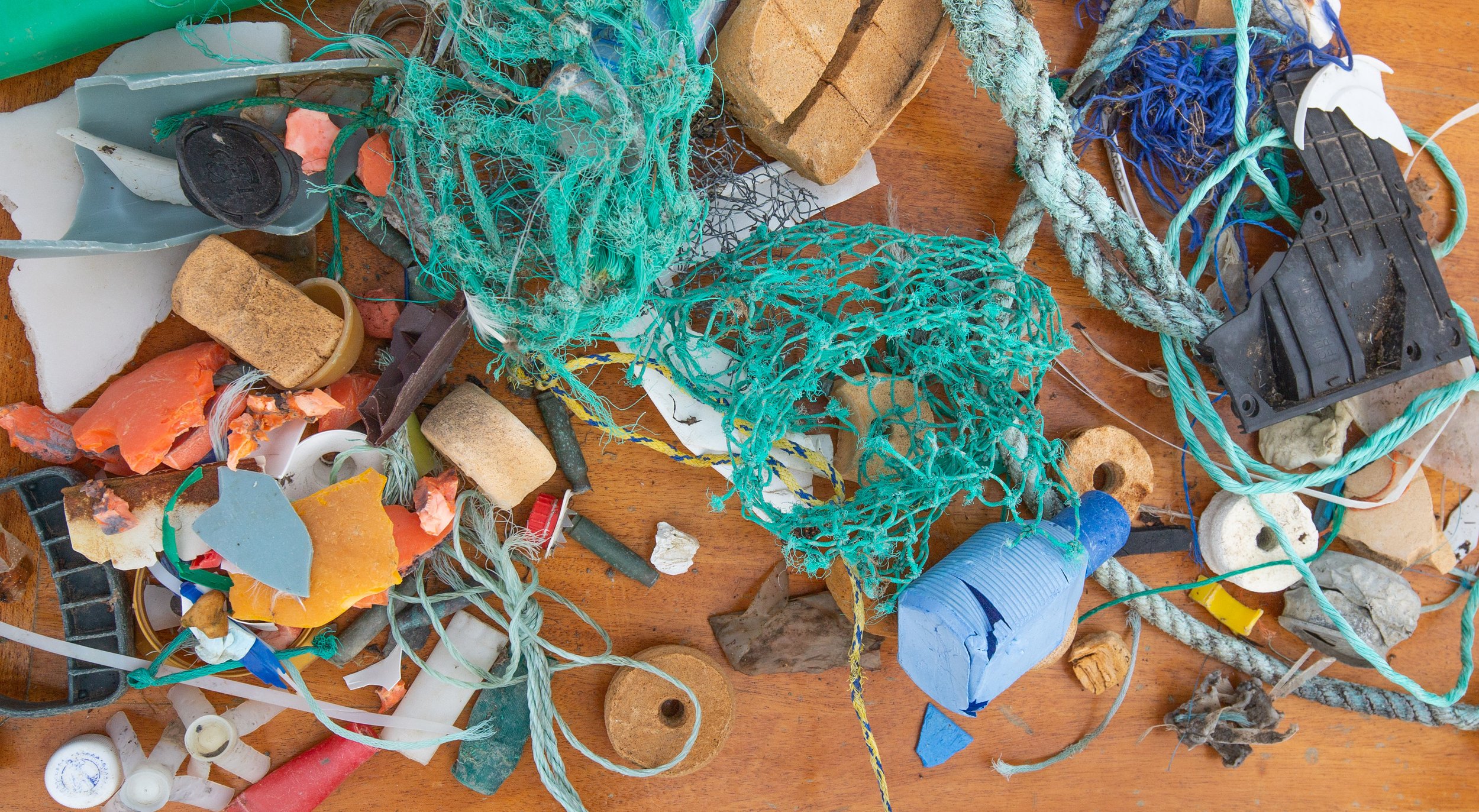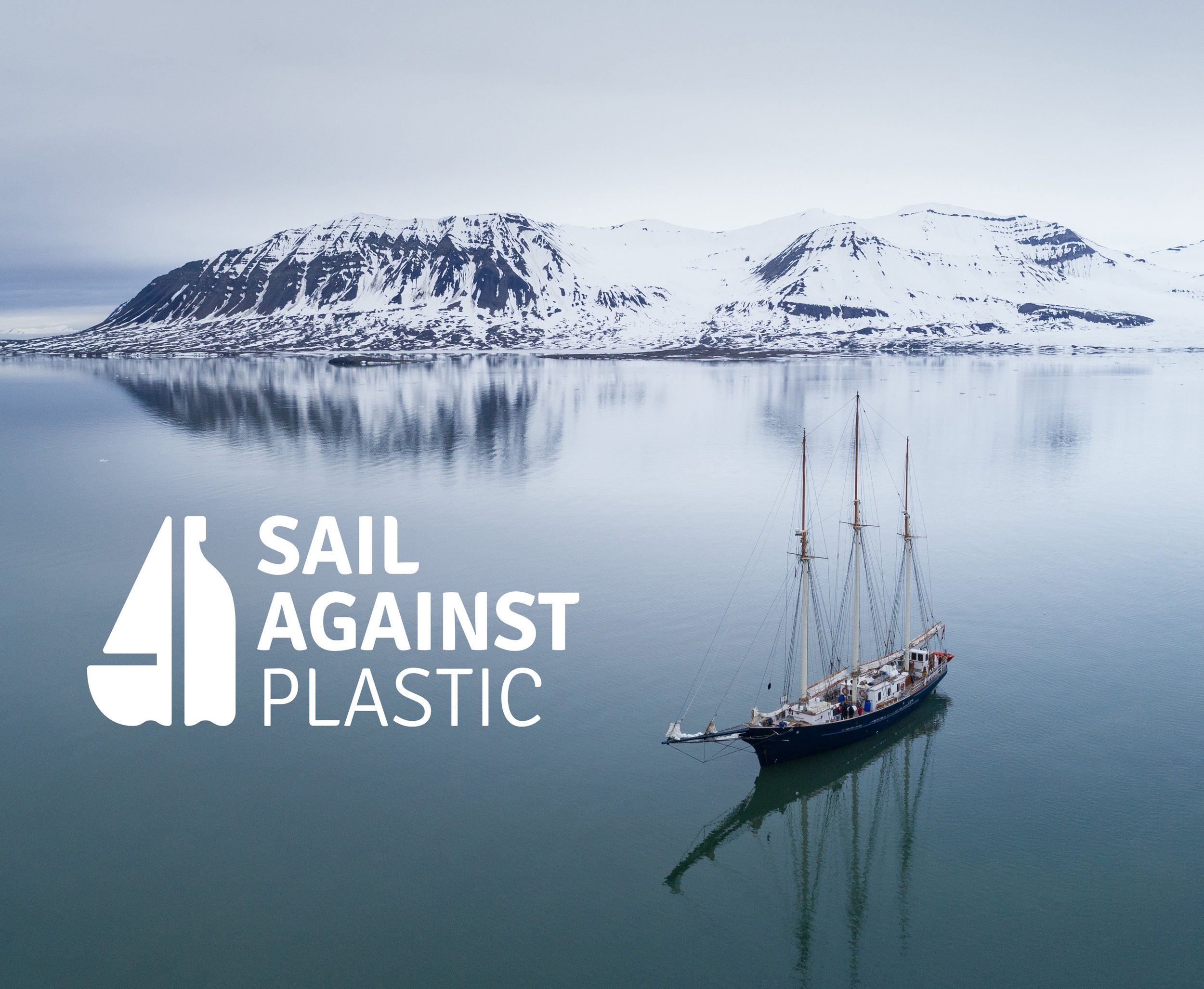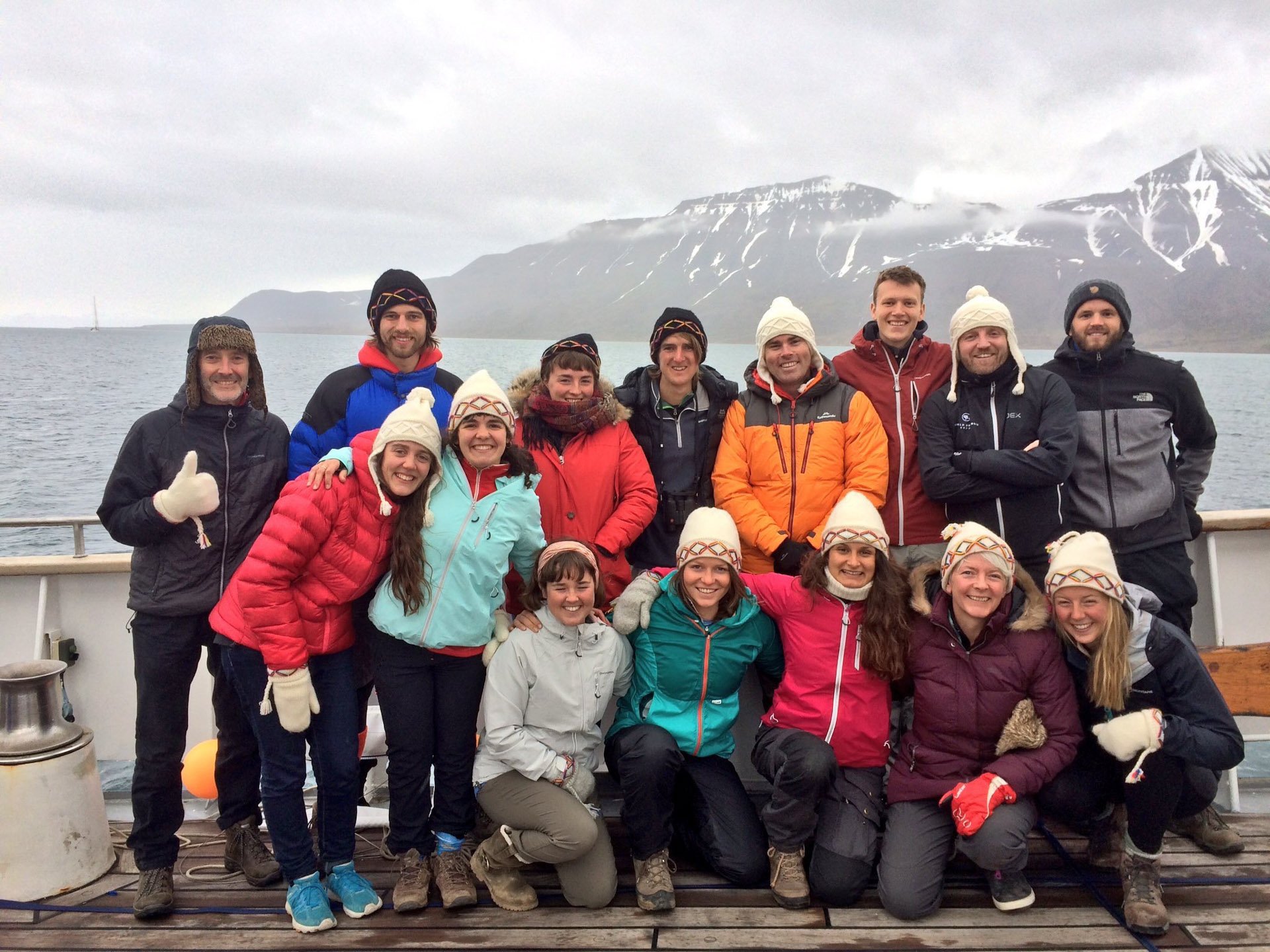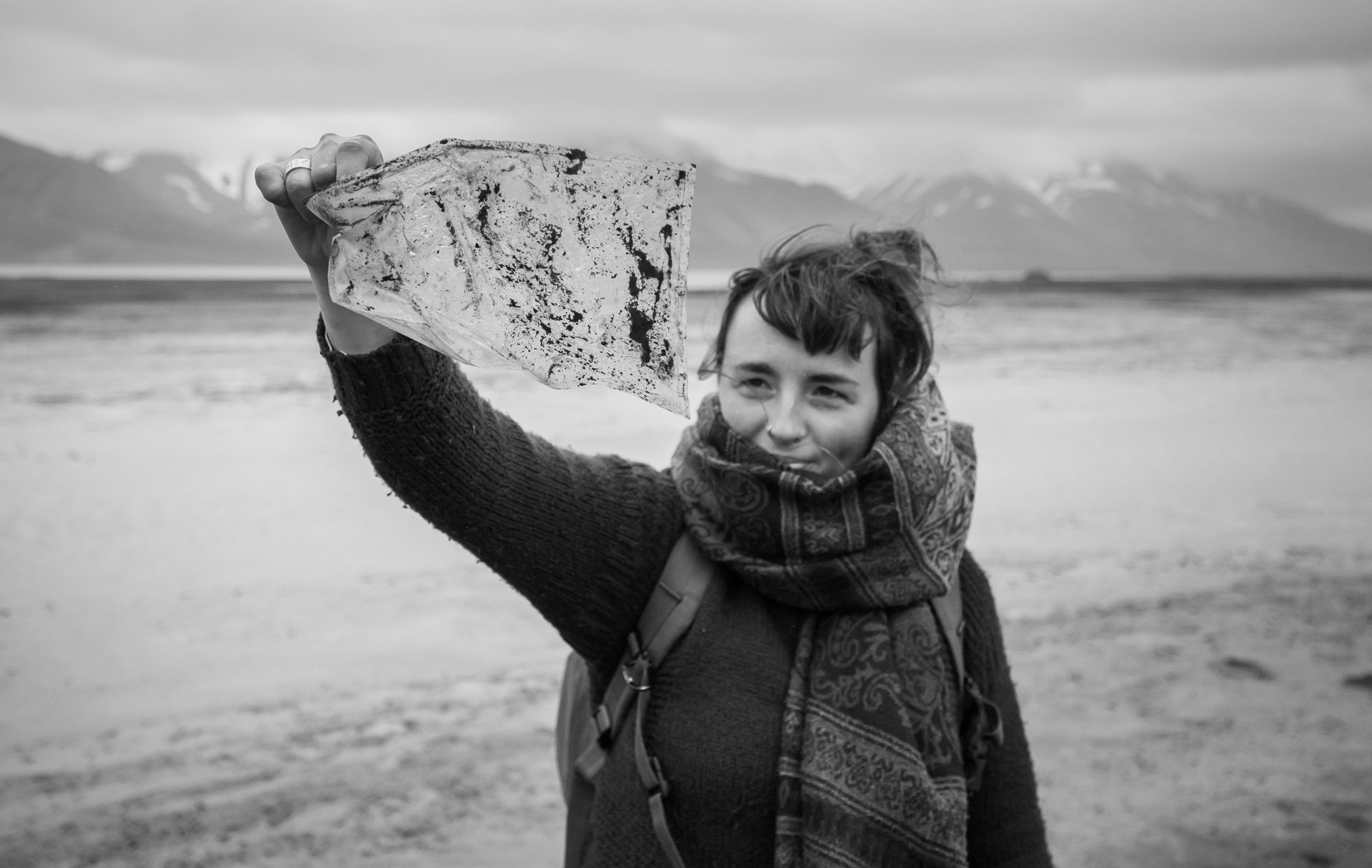
In 2018 I helped organise and undertake a pioneering student-led research expedition to the icy archipelago of Svalbard in the Arctic circle. The aim of our Sail Against Plastic expedition was to highlight the hidden and growing threat of plastic pollution in this far-flung and seemingly 'pristine' environment.
The Sail Against Plastic
Reports published in 2017 revealed how areas in eastern Greenland, Svalbard and the Arctic Ocean were becoming a 'dumping ground' for plastics and other marine litter, carried on ocean currents from northern Europe and further afield before accumulating on remote beaches, fjords and Arctic seas; out of sight, out of mind. We wanted to throw a spotlight on this issue, and investigate whether this waste was accumulating as micro plastic pollution in the waters around Svalbard.
Bringing together 25 scientists, sailors, photographers, artists, film-makers and campaigners, we spent two weeks aboard the tallship Blue Clipper trawling for microplastics in the Arctic waters, surveying the open sea for large floating plastics, testing the air for microplastic fibres and conducting beach cleans when we were able to make landfall.
By bringing together such a varied crew under one sail (excuse the pun), our hope was to combine the team's skills to bring the message about what is happening to the Arctic to a wider audience back home. Through this expedition and its poignant message, we hoped to create a legacy with a long-lasting, meaningful impact that goes above and beyond publishing scientific papers about such issues.
You can explore the various outputs from this expedition by following the links below, including a newly published Welsh children’s book written by team members Jess Grimsdale and Mari Huws based on the trip’s findings. The image gallery below also gives an overview of the expedition and some of our findings.
Sedna’s Message from the Arctic (children’s book). A Welsh children’s book about the expedition and its findings, now available to buy online.
Arctig: Môr o Blastig? A short film (in Welsh) about the issues exposed in this research expedition. Produced by team member by Mari Huws. Watch here.
Sail Against Plastic: a Message from the Arctic. Full length documentary film, produced by Tom Auld. Watch online here.
A Kittiwake passes in front of the mountains of Svalbard's dramatic coastline, lit up in the light of the midnight sun.
A Polar Bear steals a glance in our direction as it walks slowly to the head of the fjord, a green fishing net visible just feet away from washed up ghost fishing gear.
We visited several remote beaches during the expedition, removing what waste we discovered and carefully recording the types of litter to indicate its origin.
Litter from fisheries makes up an estimated 60% of marine waste worldwide. Close to a highly active fishery in the Bering Sea, it's perhaps no surprise that discarded fishing gear like this rope was a common sight on many of the shores we visited - a significant hazard to wildlife through entanglement and ingestion after the plastic polyester fibres break down into microplastic fragments.
Dig a little deeper along the shore and we discovered a plethora of smaller fragments of plastic litter and waste hiding amongst the seaweed and driftwood. It was these smaller microplastics that became the larger focus of our expedition.
A recent study took ice samples from five regions in the Arctic Ocean, and revealed shocking concentrations of microplastics: up to 12,000 pieces PER LITRE of sea ice. When this ice melts, the microplastics are released into the surrounding water and are in danger of entering the fragile Arctic foodweb at the very base of the food chain - at the zooplanktonic level.
Claire Wallerstein from the Rame Peninsula Beach Care group in Cornwall speaks on camera shortly after discovering plastic nurdles in the shoreline on this remote beach.
One of Jess Grimsdale's many beautiful paintings from the expedition, capturing the beauty and issues we discovered during the trip.
Samples from the trawl net were concentrated into a cod end, and then washed into sampling dishes to allow closer inspection.
Tom Auld uses one of our electronic microscopes connected to a laptop to take a closer look at some of the water samples and see if any microplastics were present.
An even closer look shows a blue piece of microplastic amongst the throng of planktonic creatures. These tiny pieces can easily be ingested by species feeding upon the zooplankton, and studies have even shown these miniature creatures themselves to ingest tiny fragments of plastics too.
Not only does the plastic issue impact the marine foodweb, but land are sea are inextricably linked in the Arctic, and so even terrestrial species like this charismatic Arctic Fox are also impacted by the issue.
The bright flowers of a saxifrage seem extra vivid amongst the barren and icy permafrost along the coast of Svalbard's shores.
A mars bar wrapper lies nearby other common household waste on a remote Arctic beach in Svalbard - discarded carelessly without any thought of its long term impact, nor where it may end up.
Team member Jess Grimsdale holds up a piece of plastic packaging which she removed from the muddy shoreline of one of the fjords we visited during the trip.
A handful of items strewn along the shore of a remote fjord we anchored beside during the trip. It was stark to see such a proliferation of waste, framed against a spectacular backdrop of the snow-capped peaks and mountains nearby.
Almost all populations of Northern Fulmars studied in Svalbard have been found to ingest microplastics. It is thought that they mistake small plastic fragments for prey, with tragic consequences - these fragments can be highly toxic to the birds, and can also block their digestive tract and lead to starvation. These majestic seabirds frequently soared past our ship as we sailed the coastline, and it was heartbreaking to think of the impacts plastics are having on these immense ocean wanderers.
Whilst focussing on a particularly sobering issue, the surrounding landscape of Svalbard is breathtaking, and makes it all the more stark to have a juxtaposition of disintegrating waste on the shore with views like this beyond.
Jess Grimsdale was one of two artists who joined our collaborative expedition, in the hope of communicating the issue and our findings in a more creative way. Her illustrated children's book from the expedition is now available to buy online
One of the key pieces of research we conducted was aimed at assessing the levels of microplastic pollution in the seas surrounding Svalbard. This involved using a manta trawl net attached to the side of the tallship, towed slowly through the water and capturing any plastic particles that might exist in the water below.
A closer look at one of the samples reveals small fragments of hard plastics and finer threads of micro fibres amongst a mass of zooplankton.




























